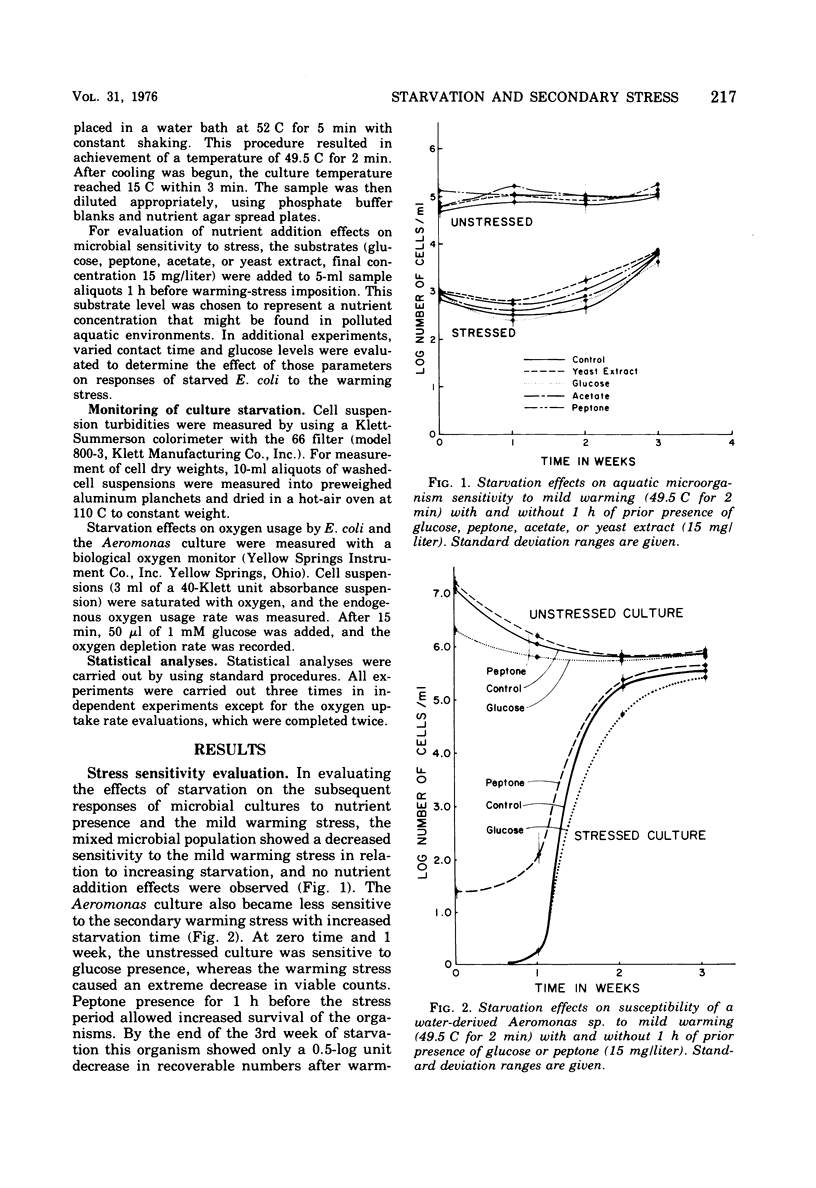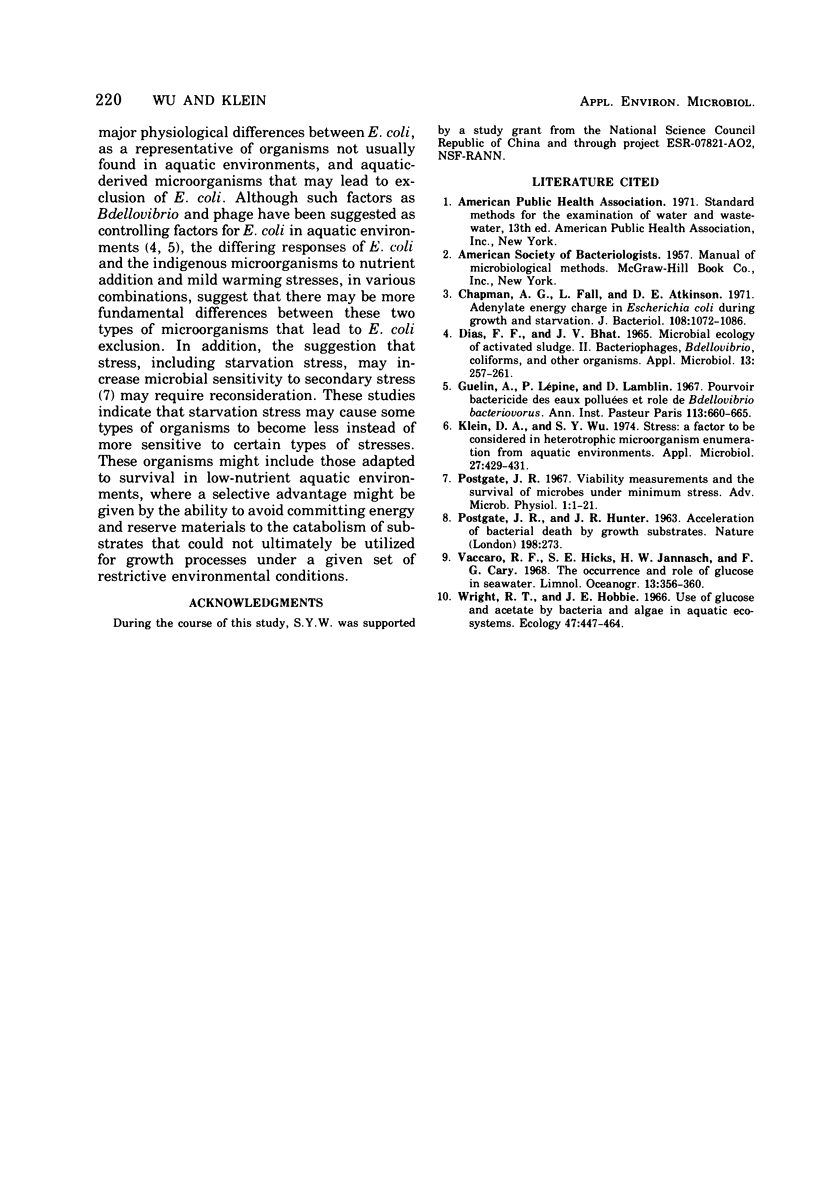Abstract
A gram-negative polar flagellated rod, isolated from a Colorado mountain stream and considered to be an Aeromonas sp., a mixed aquatic microbial population, and a culture of Escherichia coli were starved to determine their responses to the short-term presence of nutrients and mild warming stress (49.5 C for 2 min) in relation to starvation time. At the beginning of the starvation period, the Aeromonas isolate was extremely sensitive to the secondary warming stress. This response was markedly diminished after a 3-week starvation period. The mixed aquatic microbial population showed a similar trend in becoming less sensitive to stress with increased starvation. E coli under similar conditions, became more sensitive to the secondary stress after exposure to glucose. Respiration measurements after glucose additions also indicated that E. coli responded in a different manner to starvation stress and glucose presence than the Aeromonas isolate. The increased sensitivity of E. coli to secondary stress and short-term nutrient availability after starvation may contribute to the exclusion of this organism from aquatic environments.
Full text
PDF




Selected References
These references are in PubMed. This may not be the complete list of references from this article.
- Chapman A. G., Fall L., Atkinson D. E. Adenylate energy charge in Escherichia coli during growth and starvation. J Bacteriol. 1971 Dec;108(3):1072–1086. doi: 10.1128/jb.108.3.1072-1086.1971. [DOI] [PMC free article] [PubMed] [Google Scholar]
- DIAS F. F., BHAT J. V. MICROBIAL ECOLOGY OF ACTIVATED SLUDGE. II. BACTERIOPHAGES, BDELLOVIBRIO, COLIFORMS, AND OTHER ORGANISMS. Appl Microbiol. 1965 Mar;13:257–261. doi: 10.1128/am.13.2.257-261.1965. [DOI] [PMC free article] [PubMed] [Google Scholar]
- Guélin A., Lépine P., Lamblin D. Pouvoir bactéricide des eaux polluées et role de Bdellovibrio bacteriovorus. Ann Inst Pasteur (Paris) 1967 Oct;113(4):660–665. [PubMed] [Google Scholar]
- Klein D. A., Wu S. Stress: a factor to be considered in heterotrophic microorganism enumeration from aquatic environments. Appl Microbiol. 1974 Feb;27(2):429–431. doi: 10.1128/am.27.2.429-431.1974. [DOI] [PMC free article] [PubMed] [Google Scholar]
- POSTGATE J. R., HUNTER J. R. Acceleration of bacterial death by grown substrates. Nature. 1963 Apr 20;198:273–273. doi: 10.1038/198273a0. [DOI] [PubMed] [Google Scholar]


